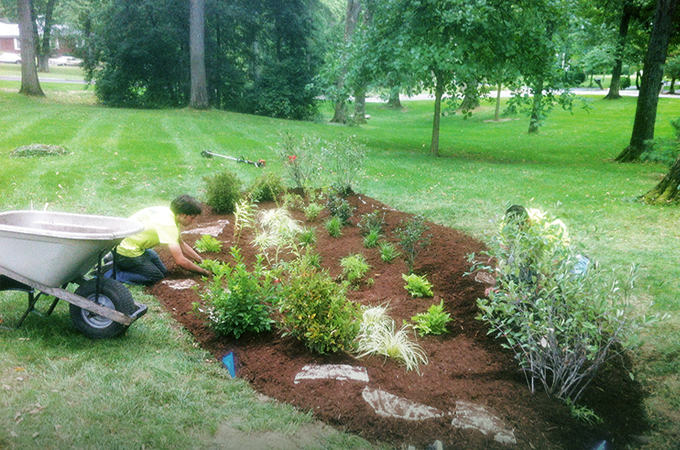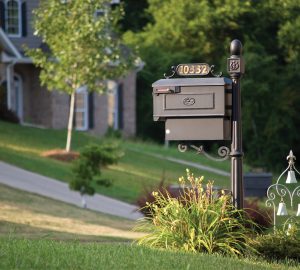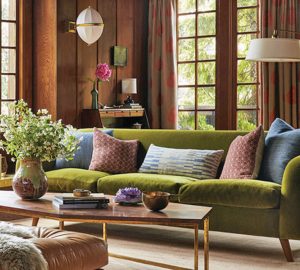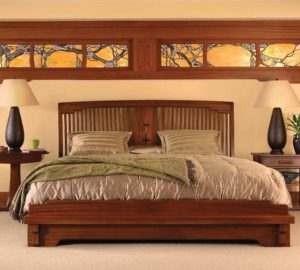The words ‘conservation’ and ‘sustainability’ no longer describe trends, but a way of life. From the food we put in our mouths to the materials we use in our homes, more and more of us expect local, organic and earth-friendly to permeate our everyday lifestyle.
[food]
Andy Ayers went ‘local’ long before it was popular. Fascinated with the industry since his first restaurant job at 16, Ayers accomplished his dream of starting his own place in 1979 when he and his wife Paula opened Riddles Restaurant. It was there, at the small, seven-table space on Natural Bridge Road, that a local farm took over supplying his produce instead of a company. “Thies Farm was right up the street, and I went there to get tomatoes for my family,” Ayers recalls. “One day, my wife said, Don’t you think our customers would like these homegrown tomatoes better than what we buy?” The light bulb went off, and they started serving homegrown tomato salad. That led to other produce substitutions, like green peppers and corn, and Ayers even used scraps to create homemade gazpacho and relishes. “Using local, more flavorful ingredients is an easy way to succeed as a chef,” he says. “Your goal is to blow people away with your food, so it was a no-brainer for me.”
After five years, they moved to a much larger space in the Loop and renamed the restaurant Riddles Penultimate Cafe and Wine Bar, which they operated for 22 years before closing. By this time, Ayers had strong connections with local growers and chefs and thought there might be a niche to broker between the two. He established Eat Here in 2008 and now serves as the buyer and delivery service for local chefs who want local food. “I have a warehouse and tons of walk-in coolers, and I pursue products that are high quality,” he explains. Growers often call if they have a surplus; otherwise, Ayers simply chooses what he thinks will sell. “Sometimes my intuition is off, and I end up donating to a food pantry, and sometimes I have to scramble to get more of an item that was really popular.” While he says there is a limit to how far he’ll drive, he’ll make exceptions. “I found a grits mill operating since 1865 in Midway, Kentucky, which is farther than what I consider local, but I can’t find anyone better who sells grits!”
He does direct marketing to chefs through an email campaign and says he constantly gets calls from people wanting to be added. “I send out a list twice a week of what’s available,” he explains. “Some customers order deliveries three to four times a week, and some just once.” Ayers says using local ingredients not only delivers superior taste, but also forces chefs to produce inventive dishes to showcase what’s in season, a mark of a true chef versus a cook. “It’s so much more fun for the chef, the staff and the customers! It turns cooking into an art form.”
He agrees the farmers market movement has moved past the fad stage. “This movement has been very grassroots and organic,” he notes. “It’s grown simply from word of mouth. small-scale agriculture won’t be about the smart kids leaving the farm anymore. It will continue to grow and appeal to people’s sense of community and desire for quality.”
[land]
For 25 years, Paul Horstmann, president and owner of Horstmann Brothers landscape company, has been doing his part to take care of the land, something he sees as more than just planting flowers and mowing grass. He understands the need to cultivate green practices not only for his business, but also for customers in their homes. The company uses leaves from fall pick-up to blend leaf compost, recycles plant pots and old equipment, and employs horticulture experts to help residential and commercial clients with unique projects, like creating rainscape gardens to promote water conservation.
Rainscape gardens are a natural way to help with drainage issues or low spots in your yard. When installed properly, they can reclaim stormwater naturally, reduce sewer overflows and minimize basement backups. “Our landscape architect designs these areas with plant materials suitable to survive in very wet conditions,” Horstmann explains. “The plants soak up the excess water, helping manage water flow while also providing cover and habitats for things like birds and butterflies.”
He describes it as an attractive element that helps the environment on many levels. “We use very low-maintenance plants that also reduce the run-off of rainwater seepage going into nearby waterways and sewer systems for the metropolitan area,” Horstmann says. “The garden slows the water, which then stays on your property and is absorbed and used by the plant material instead of going into the sewer.”
Horstmann notes there often are opportunities for homeowners in certain watershed areas to apply for financial assistance to install a rainscape garden. “It’s a win-win,” he says. “We’re helping create beauty and natural wildlife habitats while also slowing run-off and managing water.”
[living]
 As president of R.E.A. Homes, a company he started in 2007, Jeff Bogard has a lot on his plate as a custom home builder. but he takes on even more responsibility, both to his customers and to future generations, by using green practices. “We are the only local custom home builder that’s taken a pledge with the nationally recognized energy star program,” he says. “There is a long checklist we follow to be able to say our homes are 100 percent energy star certified.”
As president of R.E.A. Homes, a company he started in 2007, Jeff Bogard has a lot on his plate as a custom home builder. but he takes on even more responsibility, both to his customers and to future generations, by using green practices. “We are the only local custom home builder that’s taken a pledge with the nationally recognized energy star program,” he says. “There is a long checklist we follow to be able to say our homes are 100 percent energy star certified.”
The guidelines focus on the best practices of construction regarding the shell of the home, or what’s behind the drywall, Bogard says. As a second-generation home builder, he understands what people want—especially luxury home clients. “They are looking for it all: comfort, durability and energy-efficiency,” he says. “Normal building codes don’t ensure these things; they’re just concerned with life-safety matters.”
Bogard says his company focuses just as much on the best systems and designs for what’s ‘underneath’ as it does the floor plan in order to ensure a consistent temperature in every room, less moisture and humidity in the house, and lower energy costs. “Proper orientation of the house, proper flashing details to minimize rain water getting inside, energy-efficient appliances, LED lighting and efficient insulation all matter when constructing a home,” he says. “The biggest misunderstanding is that these things cost the client more, but the reality is that the benefits from lower monthly utility payments and a more comfortable house end up paying for any higher up-front costs.”
He notes many clients are taking it a step further by asking for an Indoor AirPlus certification (a sister program of energy star) to ensure better indoor air quality through things like low vOC paint and green materials.
Pictured: A rainscape designed by Horstmann Brothers








